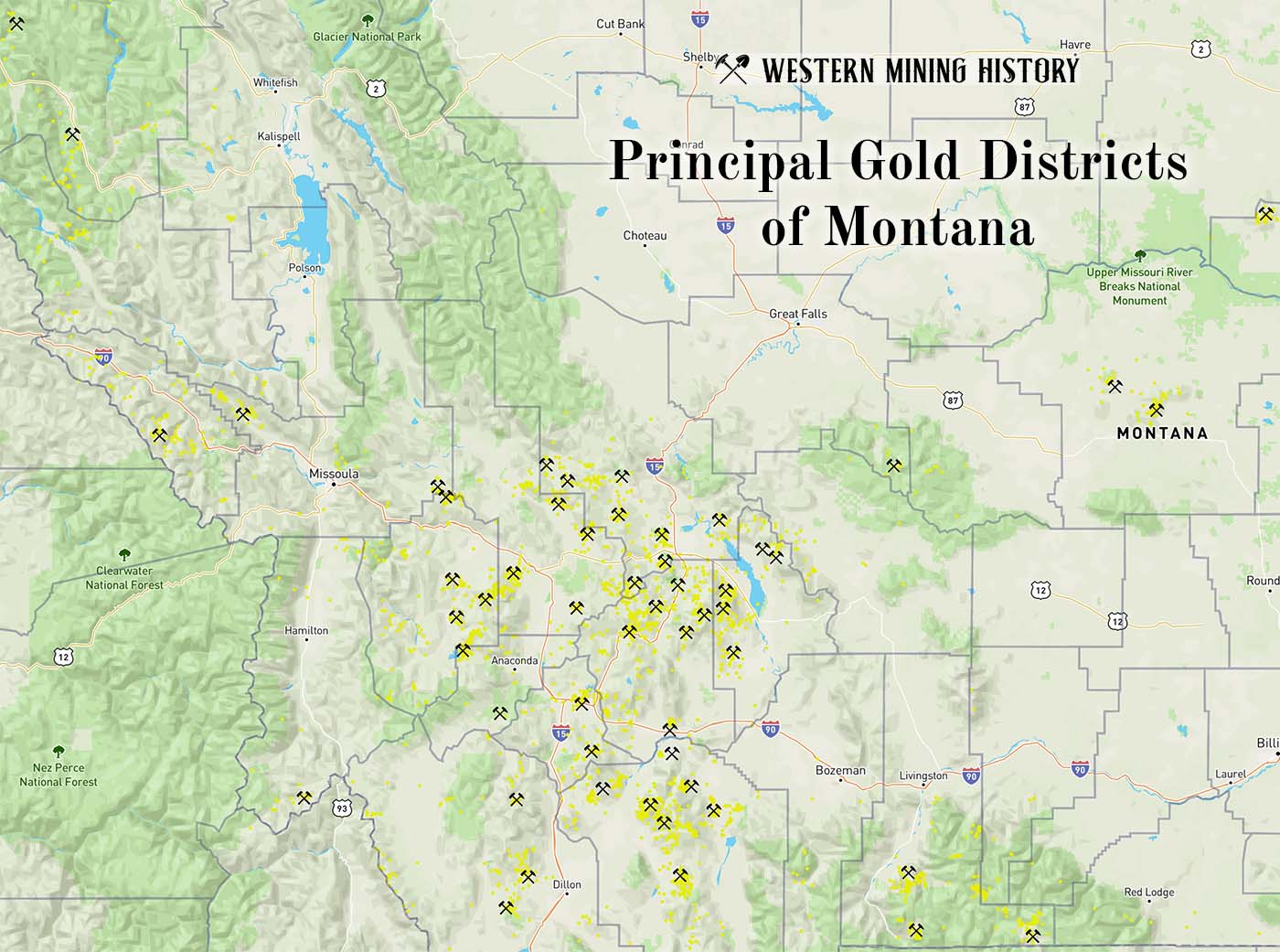The Smith Creek Copper Occurrence is a mine located in Lewis and Clark county, Montana at an elevation of 4,849 feet.
About the MRDS Data:
All mine locations were obtained from the USGS Mineral Resources Data System. The locations and other information in this database have not been verified for accuracy. It should be assumed that all mines are on private property.
Mine Info
Elevation: 4,849 Feet (1,478 Meters)
Commodity:
Lat, Long: 47.38056, -112.67722
Map: View on Google Maps
Smith Creek Copper Occurrence MRDS details
Site Name
Primary: Smith Creek Copper Occurrence
Commodity
Tertiary: Copper
Location
State: Montana
County: Lewis and Clark
Land Status
Land ownership: Private
Note: the land ownership field only identifies whether the area the mine is in is generally on public lands like Forest Service or BLM land, or if it is in an area that is generally private property. It does not definitively identify property status, nor does it indicate claim status or whether an area is open to prospecting. Always respect private property.
Holdings
Not available
Workings
Type: Underground
Ownership
Not available
Production
Not available
Deposit
Record Type: Site
Operation Category: Occurrence
Operation Type: Unknown
Discovery Method: Ore-Mineral In Place
Years of Production:
Organization:
Significant: N
Physiography
General Physiographic Area: Rocky Mountain System
Physiographic Province: Northern Rocky Mountains
Physiographic Detail: Lewis And Clark Range
Mineral Deposit Model
Not available
Orebody
Not available
Structure
Type: L
Description: South Fork Thrust Zone
Alterations
Not available
Rocks
Name: Diorite
Role: Associated
Age Type: Associated Rock Unit
Age Young: Neoproterozoic
Name: Diorite
Role: Associated
Age Type: Host Rock Unit
Age Young: Neoproterozoic
Name: Diorite
Role: Associated
Age Type: Associated Rock
Age Young: Neoproterozoic
Name: Diorite
Role: Associated
Age Type: Host Rock
Age Young: Neoproterozoic
Analytical Data
Analytical Data: GRAB SAMPLE CONTAINED 5000 PPM CU, 7 PPM AG. CHIP SAMPLE HAD 1500 PPM CU, 1500 PPM ZN, 1000 PPM PB AND 3 PPM AG
Materials
Gangue: Pyrite
Comments
Comment (Location): 1/4 MI. ABOVE PETTY AND SMITH CREEK JUNCTION
Comment (Deposit): OCCURS IN NARROW NW-TRENDING BELT OF WEAK PB-ZN MINERALIZATION ABOUT 30 MI. LONG, RELATED TO SOUTH FORK THRUST ZONE
Comment (Workings): WORKINGS CONSIST OF AN ADIT.
Comment (Deposit): SEVERAL PROSPECT PITS LOCATED TO THE WEST OF THIS LOCALITY ; INFO.SRC : 1 PUB LIT
References
Reference (Deposit): 1968 GEOCHEM MUDGE, M.R., ERICKSON, R.L., KLEINKOPF, D.: BULL. 1252-
Reference (Analytical Data): SRC.REF: MUDGE, M.R., ERICKSON, R.L., AND KLEINKOPF, D., 1968, USGS BULL. 1252-E, P. 26
Reference (Deposit): MUDGE, M.R., ERICKSON, R.L., AND KLEINKOPF, D., 1968, RECONNAISSANCE GEOLOGY, GEOPHYSICS, AND GEOCHEMISTRY OF THE SOUTHEASTERN PART OF THE LEWIS AND CLARK RANGE, MONTANA: USGS BULL. 1252-E, P. 25-2
Principal Gold Districts of Montana

In Montana, 54 mining districts have each have produced more than 10,000 ounces of gold. The largest producers are Butte, Helena, Marysville, and Virginia City, each having produced more than one million ounces. Twenty seven other districts are each credited with between 100,000 and one million ounces of gold production. Read more: Principal Gold Districts of Montana.